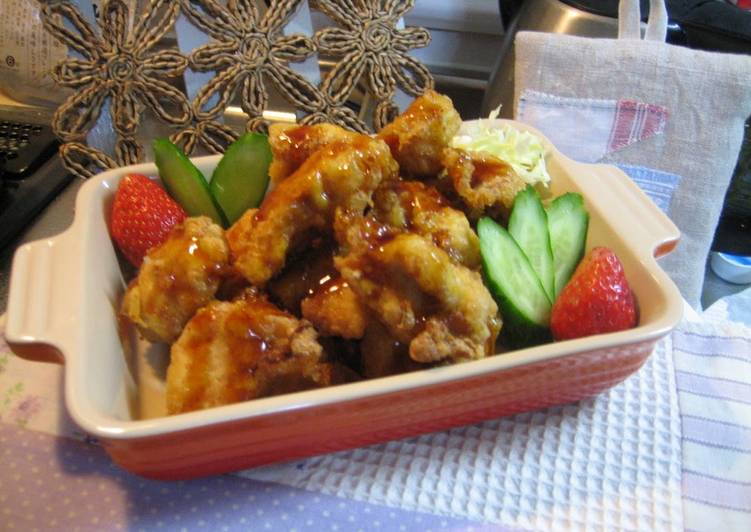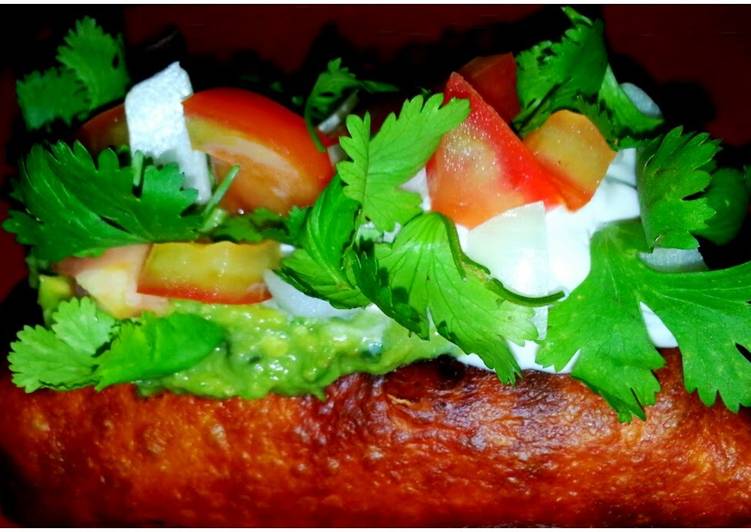
Hey everyone, I hope you’re having an amazing day today. Today, I’m gonna show you how to make a distinctive dish, our family's chicken with nanban sauce. One of my favorites. For mine, I’m gonna make it a bit tasty. This is gonna smell and look delicious.
Authentic Chicken Nanban recipe based on the original from Miyazaki Japan, made with fried chicken coated in a crispy egg batter marinated in a sweet and sour Chicken Nanban is always served with a side of Japanese tartar sauce, and it usually includes some thinly shredded cabbage on the side. Nanban sauce or vinegar is most commonly used for nanban dishes. Chicken Nanban is a local specialty in Miyazaki Prefecture.
Our Family's Chicken with Nanban Sauce is one of the most favored of recent trending meals in the world. It’s simple, it is fast, it tastes yummy. It’s appreciated by millions daily. Our Family's Chicken with Nanban Sauce is something which I have loved my entire life. They’re nice and they look wonderful.
To get started with this recipe, we must first prepare a few ingredients. You can cook our family's chicken with nanban sauce using 6 ingredients and 11 steps. Here is how you can achieve that.
The ingredients needed to make Our Family's Chicken with Nanban Sauce:
- Prepare 2 Chicken breast meat
- Prepare 1 Mayonnaise
- Take 5 tbsp of each Vinegar, sugar, soy sauce
- Prepare 1 heaping teaspoon Katakuriko
- Make ready 1 Katakuriko (for coating the chicken)
- Make ready 2 Eggs
Chicken Nanban is a regional cuisine from Miyazaki Prefecture in Kyushu Island (most southwesterly of Japan's four main islands) but now I usually serve Chicken Nanban with eggplant and bell pepper (eggplant is a must!). If you can find shiso leaves (Perilla) in Japanese or Korean supermarket, I. Chicken Nanban is deep-fried chicken with tartar sauce, a dish from Miyazaki prefecture in Kyusyu, the southern big island of Japan. They say that Chicken Nanban was first developed for employees in restaurant in Miyazaki.
Steps to make Our Family's Chicken with Nanban Sauce:
- Pierce the chicken meat several times with a fork.
- Cut into bite size pieces and put into a bowl. Mix with some mayonnaise. (You can use this method if you're going to sauté the meat too.)
- Add the vinegar, sugar, and soy sauce into a pot and heat. Once the sugar has melted, add a slurry of katakuriko dissolved in 1 tablespoon of water. Mix well.
- Stir 2 to 3 times and remove from heat.
- Coat the chicken with katakuriko.
- Break the eggs into the bowl and beat. Mix so that the chicken gets thoroughly coated with the egg.
- Fry the chicken at a low temperature to cook thoroughly, although this depends on the size of the chicken pieces.
- In our house we like the pour the thickened an sauce over the chicken, but you can pre-mix it before serving. Add tartare sauce to taste.
- I added a ton of shredded cabbge on top of rice to make a rice bowl that my boys love.
- Delicious the next day in a bento too, since they stay tender even when cold.
- Really good between slices of bread!! Add some vegetables and fruit for a balanced meal!
Chicken nanban is an example of "yoshoku", Western style food that has been adapted to suit Japanese tastes. This succulent chicken dish originated in Miyazaki Prefecture in the far South of Japan. Topped off with rich tartar sauce, this dish is particularly nice with a side of chips or new. Japanese food is so healthy because it gets its flavor from spices and carefully brewed stocks rather than from copious amounts of oil. But that doesn't mean Japanese food doesn't taste good (visit any sushi restaurant and order a tuna roll and you'll literally have a mouthgasm).
So that is going to wrap this up with this special food our family's chicken with nanban sauce recipe. Thanks so much for your time. I am confident that you will make this at home. There’s gonna be more interesting food in home recipes coming up. Don’t forget to bookmark this page in your browser, and share it to your loved ones, colleague and friends. Thanks again for reading. Go on get cooking!

